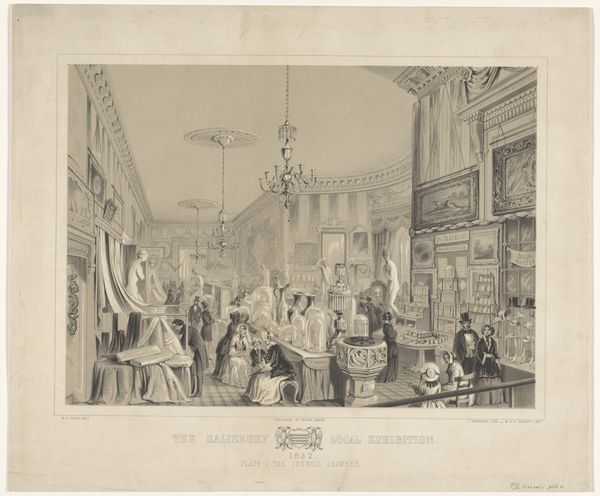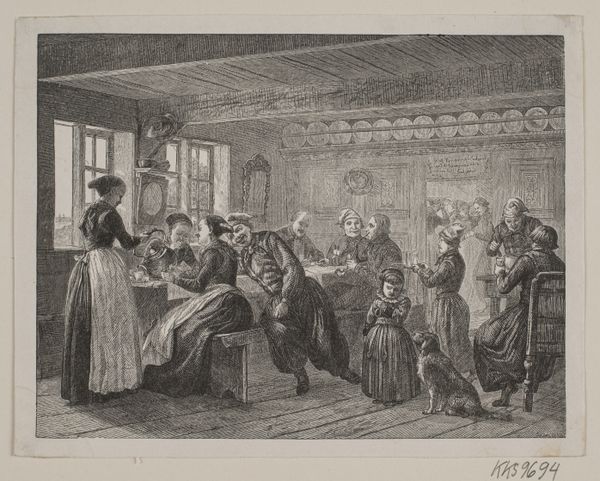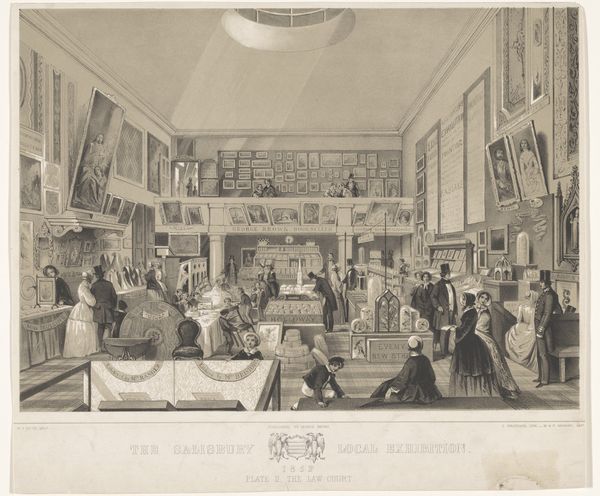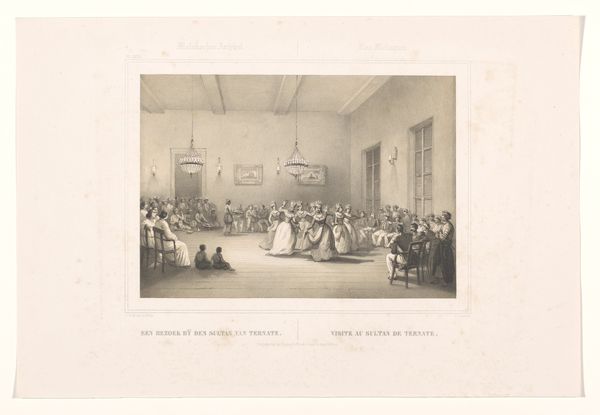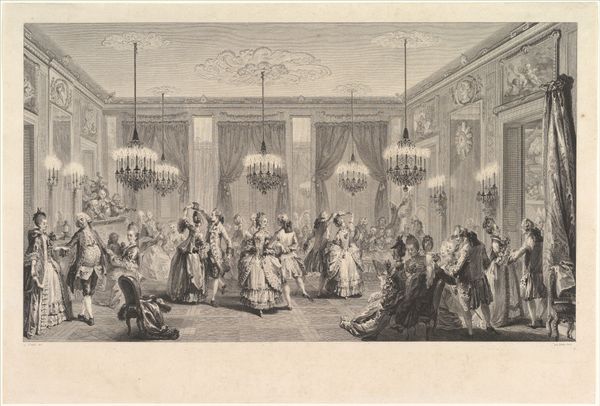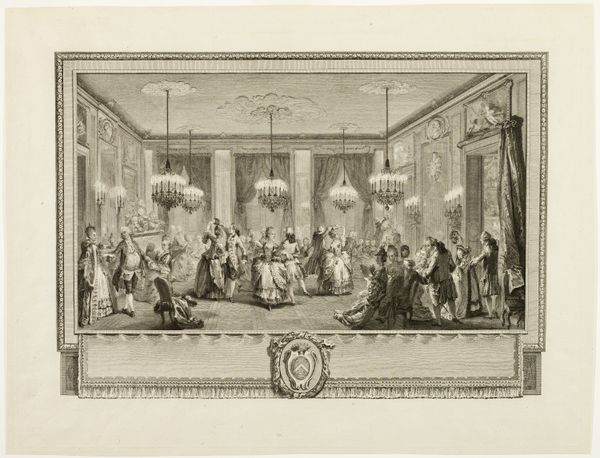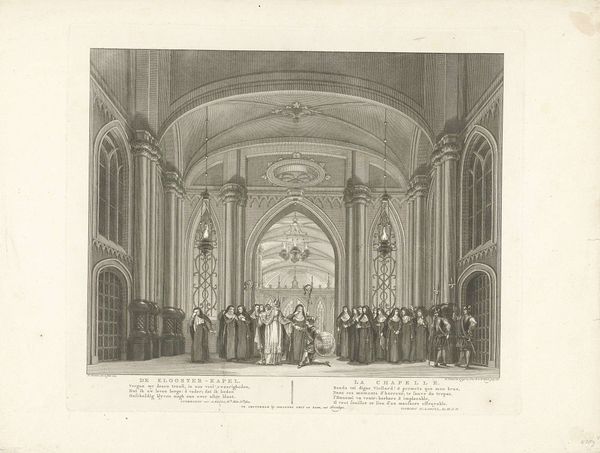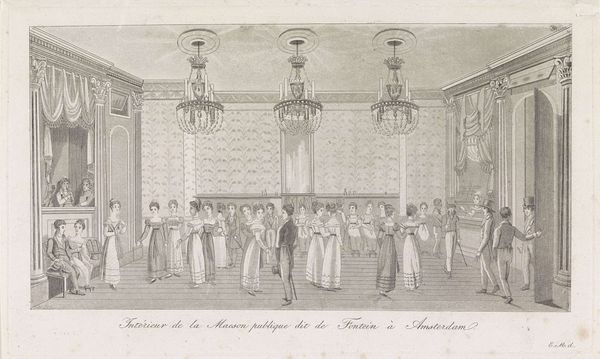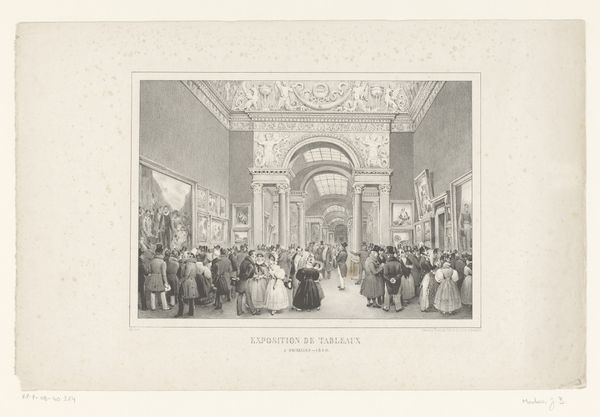
Verloting ten voordeele der algemeende armen van 's Gravenhage. Tentoonstelling 1847 1847
0:00
0:00
print, engraving
#
16_19th-century
#
dutch-golden-age
# print
#
old engraving style
#
genre-painting
#
history-painting
#
academic-art
#
engraving
#
realism
Dimensions: height 261 mm, width 338 mm
Copyright: Rijks Museum: Open Domain
Curator: This print by Carel Christiaan Antony Last, created in 1847, is titled "Verloting ten voordeele der algemeende armen van 's Gravenhage. Tentoonstelling 1847," which translates to "Lottery for the benefit of the general poor of The Hague. Exhibition 1847." Editor: My goodness, it's busy, isn't it? Everyone looks so earnestly well-meaning, wandering amongst these tables laden with… what are those, treasures? And the ladies' dresses! It feels like stepping into a Jane Austen novel, though a slightly more philanthropic one. Curator: Indeed! The print offers a glimpse into a fundraising event. Lotteries were common methods to collect funds, but what’s interesting here is that the funds were destinated to relieve poverty. And yes, there is so much attention given to clothing details in Realist and Academic artwork from this time. Editor: A room full of good intentions! It makes me wonder, though, about the optics. Were these grand events genuinely effective in tackling poverty, or did they serve more to assuage the guilt of the well-to-do? All those art pieces hanging about - what sort of art do you imagine they displayed, really? Portraits of stern benefactors, perhaps? Curator: That’s the tension, isn't it? Charity then, as now, treads this line between genuine aid and social performance. As to the artworks, they are not necessarily portraits! You can see various genres there hanging in the background, everything from landscapes to possible historical scenes. Editor: It makes me think about how the act of giving has evolved or devolved over the centuries. What does it mean to participate in solving collective problems today? Perhaps that's the unwritten subtitle to this image, no? Curator: Absolutely. Last's engraving captures a moment of transition, doesn't it? From individual acts of charity to more organized systems of social welfare, still figuring themselves out. And you are right in your sense of performance: charity benefits the receiver of the gift, but also, and centrally here, the one that offers. Editor: Looking at this piece, I feel oddly invigorated and provoked all at once. Curator: It definitely inspires you to reflect upon the long history of art institutions and practices that support individuals and social causes!
Comments
No comments
Be the first to comment and join the conversation on the ultimate creative platform.
